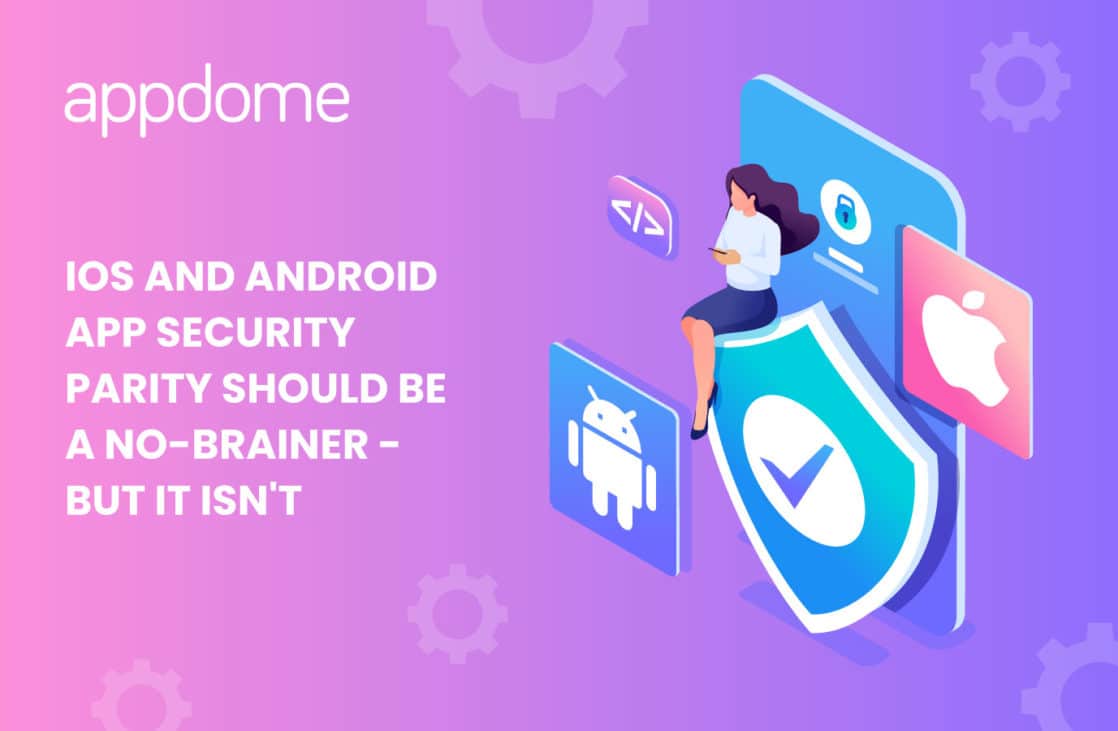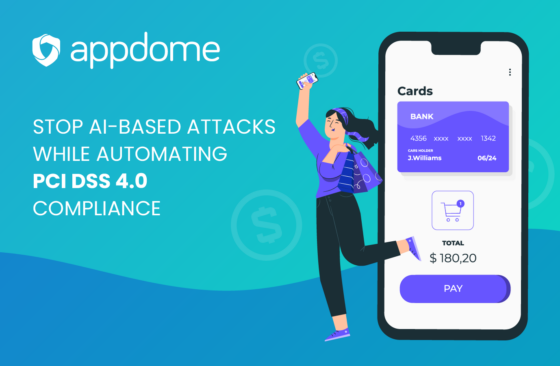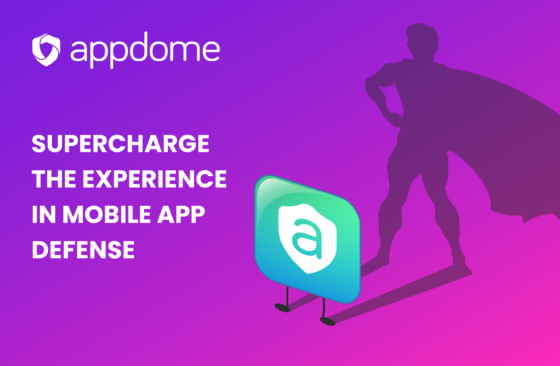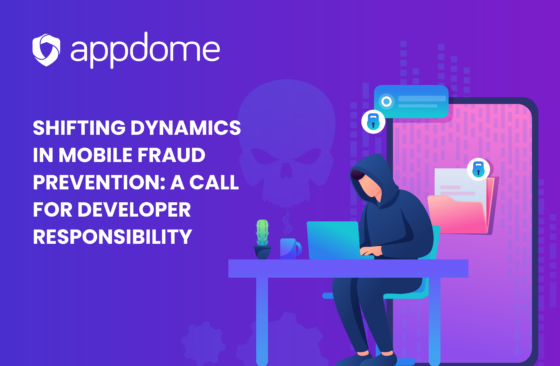The voice of the mobile consumer is very clear; a global survey of 10,000 mobile consumers found that the security expectations of iOS and Android users are the same. In fact, we can discard the conventional wisdom that iOS users feel more protected than Android users.
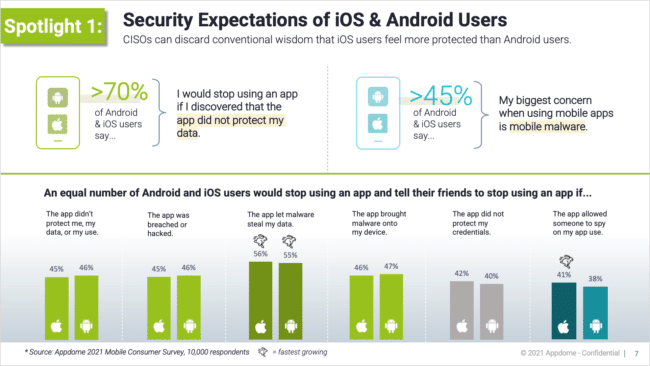
The Difference in Android and iOS App Security
 Android and iOS however are totally different operating systems. In case you’re wondering how different, here’s a great comparison between Android and iOS, a list of the 5 major differences between iOS and Android app development and another comparison that goes into great detail on all the differences. As a result, most developers make a choice; they either become iOS developers or they become Android developers. This blog that points the difference between an iOS developer and an Android developer.
Android and iOS however are totally different operating systems. In case you’re wondering how different, here’s a great comparison between Android and iOS, a list of the 5 major differences between iOS and Android app development and another comparison that goes into great detail on all the differences. As a result, most developers make a choice; they either become iOS developers or they become Android developers. This blog that points the difference between an iOS developer and an Android developer.
Conclusion: there are fundamental differences between iOS and Android. As a result, coding security in Android apps and building security in iOS apps requires a very different set of tools and skills.
Challenges for CISOs
This poses major challenges for CISOs. In 2021 the mobile app security landscape changed drastically. Looking at trends for 2022, mobile ransomware attacks remain a major threat and mobile banking trojans are probably the biggest threat to mobile banking apps and mobile banking customers. As the pandemic continues, Work From Home will remain the standard for the time being. In addition, brands globally have moved towards mobile apps as the main point of engagement with their consumers.
CISOs are asked to come up with a common security model for all their mobile apps, to prevent any breaches of their apps. But in large part due to the difference in iOS and Android development they find it very hard to implement, let alone mandate, such a common security model. Designing and implementing such common security model runs into many obstacles; such as lack of time, resources, skills, and more.
And when CISOs evaluate mobile app security vendors they find that:
Most Commercial Mobile App Security Solutions Do Not Offer Parity Between Android and iOS App Security
I have researched all the different mobile app security solutions available in the market. When I look “under the cover”, I find that most offer very different security options for iOS vs Android. The iOS app security solutions of some vendors don’t compare at all to the Android security solutions of the same vendor. This even leads some vendors to brand their Android app security as their “mobile app” security solution. And while some vendors clearly differentiate between their iOS app security and their Android app security, others will make finding the difference in their offerings (deliberately) difficult.
Yes, there are very valid technical reasons for not being able to offer parity between Android and iOS app security, but the mobile consumer does not care. Their voice is very loud and clear. Mobile consumers expect the same level of security in Android apps as in iOS apps.
Appdome Offers Parity Between Android and iOS App Security
Appdome is the only vendor in the mobile app security space that allows app makers to build the same security features in both their Android and iOS apps. Using Appdome’s intuitive and easy to use UI, developers can simply “toggle on” the security features they want to add to their mobile apps. And without writing a single line of code, they can build a secure version of their app, sign it and publish it to the Apple App Store or Google Play Store in mere minutes.
Appdome offers 3 major business benefits:
- CISOs can set and control the security features they want to see implemented in all their mobile apps into a “Fusion Set”.
- Using Appdome’s CI/CD integration, developers can easily connect the Appdome build system with their DevOps pipeline and implement the CISO approved security features to their mobile apps, without having to change their existing workflows.
- Appdome truly helps organizations transform their mobile DevOps processes into Mobile DevSecOps.
As you can see from the screenshots below, with Appdome, app makers can implement the same security features to their iOS and Android apps, regardless of the framework the apps were built in. These features shown in the screenshot are:
- TOTALData Encryption – AES-256 encryption of all data stored in the application sandbox as well as throughout the code of the app (in the preferences, strings and resources as well as encrypt the strings.xml and java class .dex files of Android apps).
- OS Security – adds iOS jailbreak prevention and Android root prevention to banking and fintech apps.
- Secure Communications – protects any mobile banking and fintech app against Man-in-the-Middle (MitM) and other network-based threats. It also adds secure certificate pinning and bot defense to the apps to further protect the connection between the app and the mobile back end.
- Mobile Privacy – Data Loss Prevention with copy/paste protection and prevent screen sharing and screen capture
- TOTALCode Obfuscation – to obfuscate all binary code and all non-native coding elements, including 3rd party libraries and SDKs.
- ONEShield – Appdome’s RASP solution which adds debugging, tampering, iOS reversing engineering and Android reverse engineering protections to the app. It also prevents the app from running an emulators and simulators.
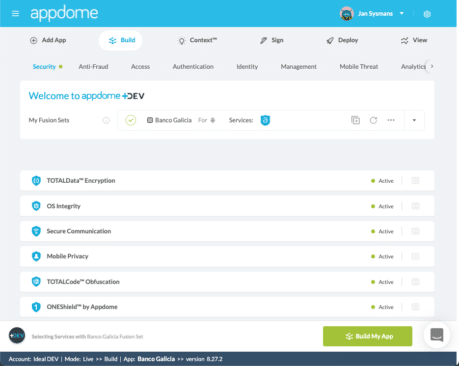
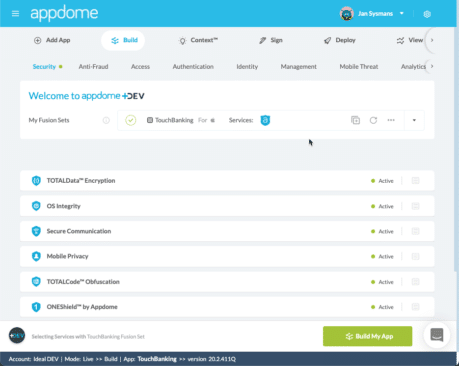
Request a demo of Appdome today learn how to ensure iOS and Android app security parity between your mobile apps.

